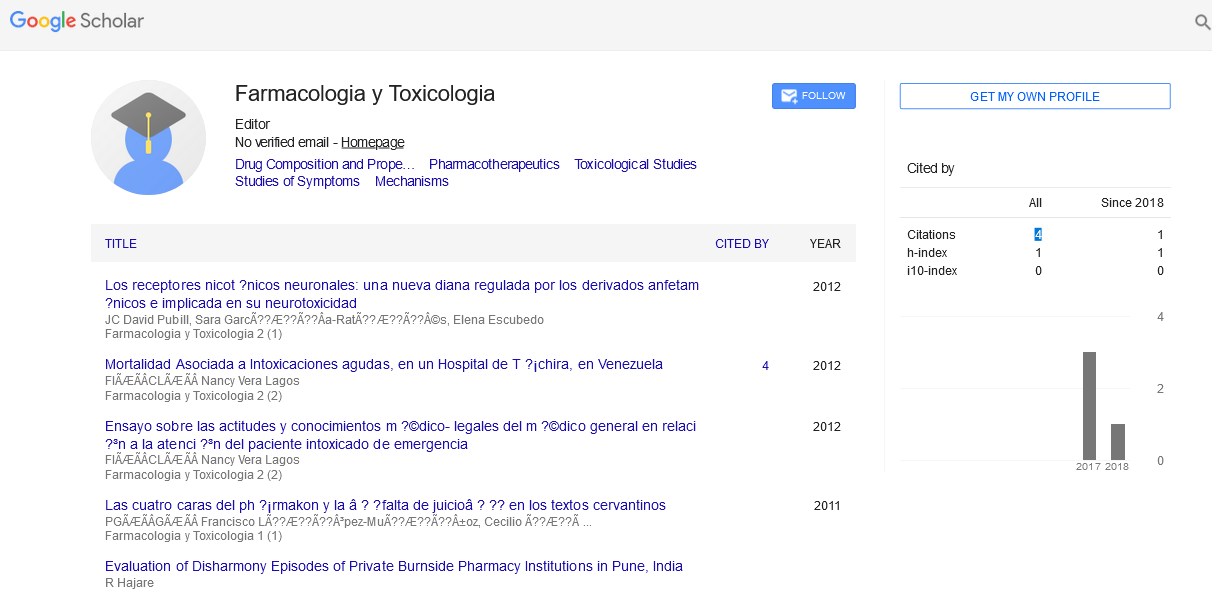Perspective - (2024) Volume 14, Issue 6
Biotransformation: The Intersection of Metabolism and Toxicology
Raul Trbojevich*
Department of Toxicology, University of Aerasmies, Rotterdam, Netherlands
*Correspondence:
Raul Trbojevich, Department of Toxicology, University of Aerasmies, Rotterdam,
Netherlands,
Email:
Received: 07-Aug-2024, Manuscript No. IPFT-24-15141 ;
Editor assigned: 12-Aug-2024, Pre QC No. IPFT-24-15141 (PQ);
Reviewed: 26-Aug-2024, QC No. IPFT-24-15141 ;
Revised: 02-Dec-2024, Manuscript No. IPFT-24-15141 (R) ;
Published:
30-Dec-2024
Introduction
Biotransformation is a critical physiological process that
involves the chemical modification of compounds by living
organisms. Primarily, it is the body's mechanism to convert
lipophilic (fat-soluble) compounds into more hydrophilic (watersoluble)
forms for easier excretion. This process is essential for
the metabolism of endogenous substances and the
detoxification of exogenous compounds, including drugs,
environmental pollutants and dietary toxins. Understanding
biotransformation is crucial in the fields of pharmacology and
toxicology because it influences the efficacy and toxicity of
chemicals.
Description
Phases of biotransformation
Biotransformation is typically divided into two phases: phase I
and phase II reactions.
Phase I reactions: Phase I reactions involve the introduction
or unmasking of functional groups on the substrate molecule.
These reactions are primarily oxidative, reductive or hydrolytic,
facilitated by enzymes such as Cytochrome P450
monooxygenases (CYPs). Phase I reactions often produce
reactive intermediates, which may require further processing in
phase II.
Phase II reactions: Phase II reactions are conjugation
reactions, where an endogenous substrate (such as glucuronic
acid, sulfate or glutathione) is added to the functional group
introduced in phase I. These reactions significantly increase the
hydrophilicity of the compounds, facilitating their excretion.
Role in toxicology
Biotransformation plays a dual role in toxicology: It can
detoxify harmful compounds or paradoxically, convert them into
toxic metabolites.
Detoxification: Many xenobiotics (foreign compounds)
undergo biotransformation to become more water-soluble and
thus more easily excreted. For instance, ethanol is oxidized to
acetaldehyde and then to acetic acid, which is less toxic and
more readily excreted.
Bioactivation: Conversely, some compounds become more
toxic after biotransformation. This is known as bioactivation. A
classic example is the biotransformation of acetaminophen.
Normally, it undergoes phase II metabolism to form non-toxic
conjugates. However, at high doses, the phase I enzyme CYP2E1
converts acetaminophen to N-Acetyl-P-Benzoquinone Imine
(NAPQI), a highly reactive metabolite that can cause severe liver
damage if not detoxified by glutathione conjugation.
Factors influencing biotransformation
Biotransformation is influenced by several factors, including
genetic, environmental, physiological and pathological
conditions.
Genetic factors: Genetic polymorphisms in biotransformation
enzymes can lead to significant inter-individual differences in
drug metabolism. For instance, variations in the CYP2D6 gene
affect the metabolism of many drugs, including antidepressants
and opioids, leading to classifications of individuals as poor,
intermediate, extensive or ultra-rapid metabolizers.
Environmental factors: Exposure to certain chemicals can
induce or inhibit biotransformation enzymes. For example,
smoking induces CYP1A2, altering the metabolism of drugs such
as caffeine and theophylline. Similarly, grapefruit juice inhibits
CYP3A4, affecting the metabolism of various medications.
Physiological factors: Age, sex and diet also influence
biotransformation. Neonates and elderly individuals often have
reduced metabolic capacity. Additionally, sex differences in
hormone levels can affect enzyme activity. Dietary components
like cruciferous vegetables can induce CYP enzymes, while
certain fruits can inhibit them.
Pathological conditions: Liver diseases, such as cirrhosis or
hepatitis, impair the organ's ability to perform
biotransformation, leading to altered drug metabolism and
increased toxicity. Kidney diseases can affect the excretion of
metabolites, also impacting overall metabolism and toxicity.
Implications in drug development
Understanding biotransformation is vital in drug development
to ensure safety and efficacy. Pharmacokinetic studies assess
how a drug is Absorbed, Distributed, Metabolized and Excreted
(ADME). Identifying the metabolites formed and their potential toxicity is crucial. Regulatory agencies require detailed
biotransformation data before approving new drugs.
Biotransformation and personalized medicine
The field of pharmacogenomics, which studies how genes
affect a person's response to drugs, leverages knowledge of
biotransformation to tailor therapies. By understanding genetic
variations in biotransformation enzymes, clinicians can predict
responses to medications and customize treatments. For
example, genotyping for CYP2C19 can guide the use of
antiplatelet drugs like clopidogrel, improving therapeutic
outcomes and reducing adverse effects.
Environmental and occupational health
Biotransformation also has implications for environmental
and occupational health. Workers exposed to industrial chemicals or pollutants may have different risks of toxicity based
on their biotransformation capabilities. Biomonitoring of
metabolites in biological samples (such as urine or blood) can
help assess exposure levels and potential health risks.
Conclusion
Biotransformation is a complex yet essential process that
influences the pharmacokinetics and toxicity of compounds.
Understanding the nuances of phase I and phase II reactions, as
well as the factors affecting these processes, is crucial in
pharmacology, toxicology and personalized medicine. As
research in this field advances, it will continue to enhance our
ability to predict, mitigate and harness biotransformation for
therapeutic and protective purposes, ultimately improving
human health and safety.
Citation: Trbojevich R (2024) Biotransformation: The Intersection of Metabolism and Toxicology. Farmacologia Toxicologia, Vol.14 No.6: 056





